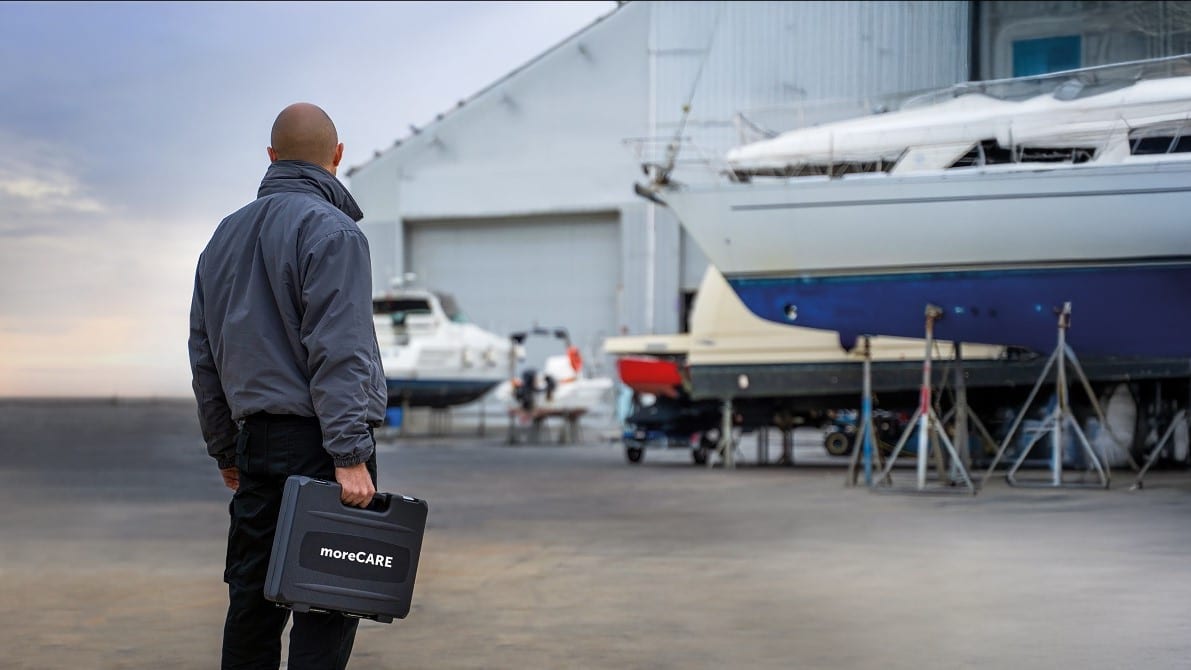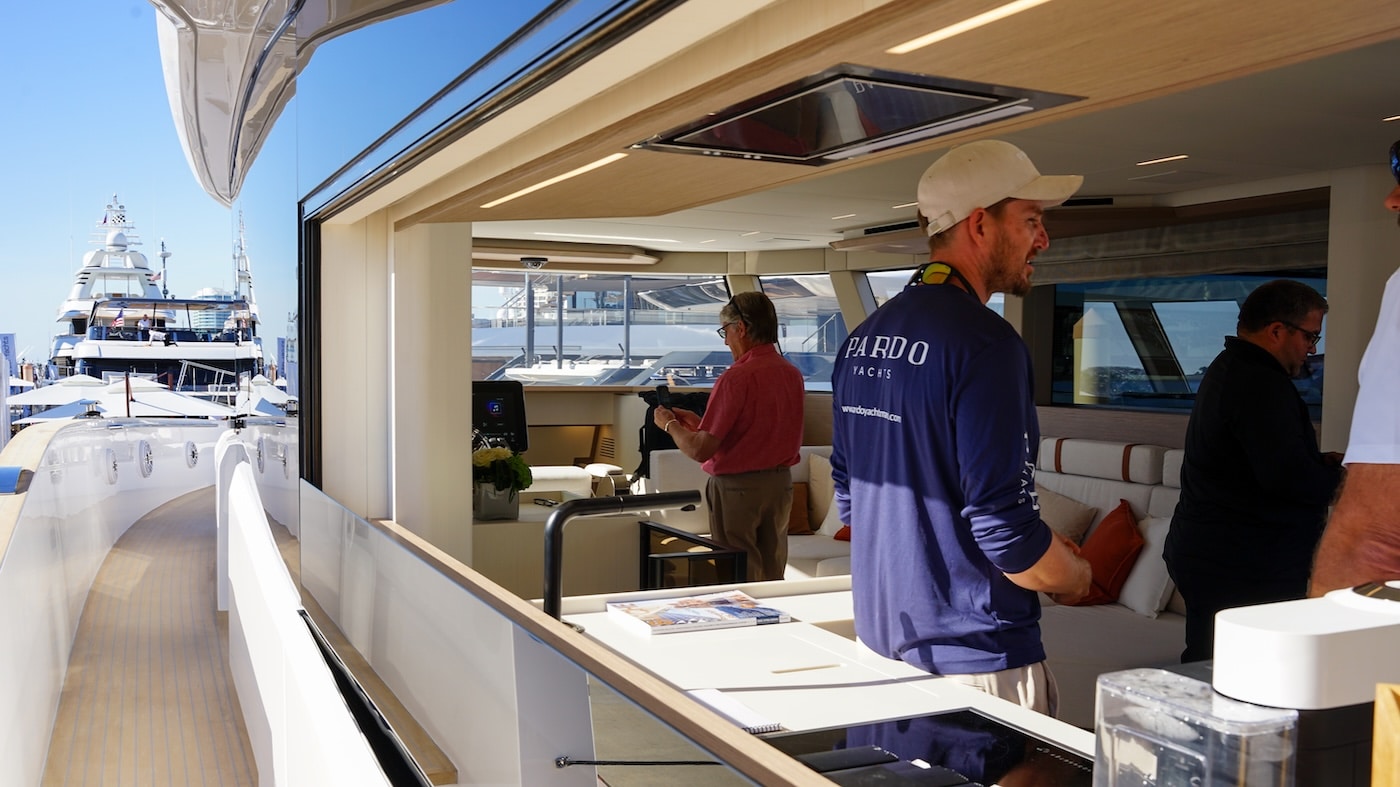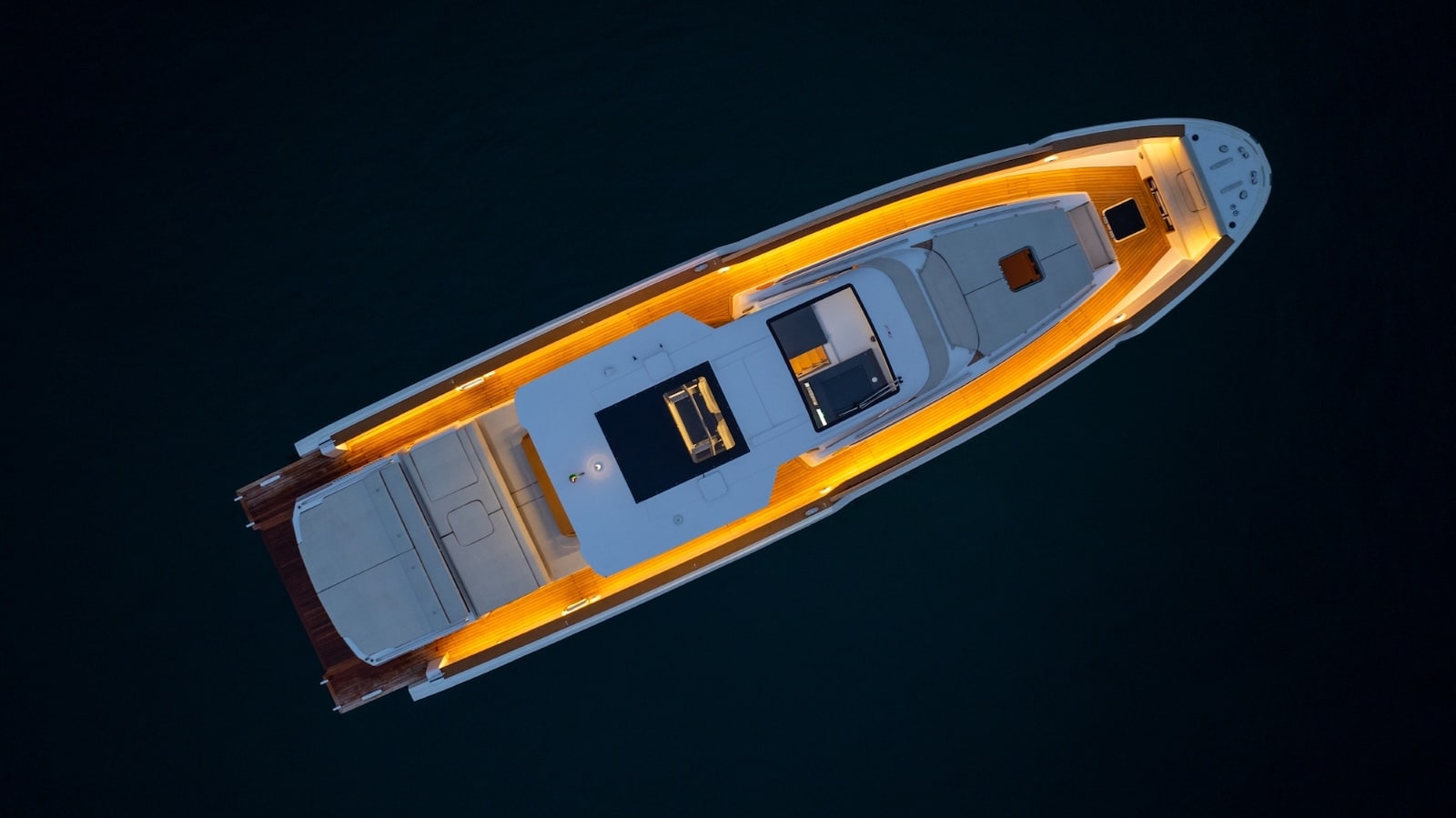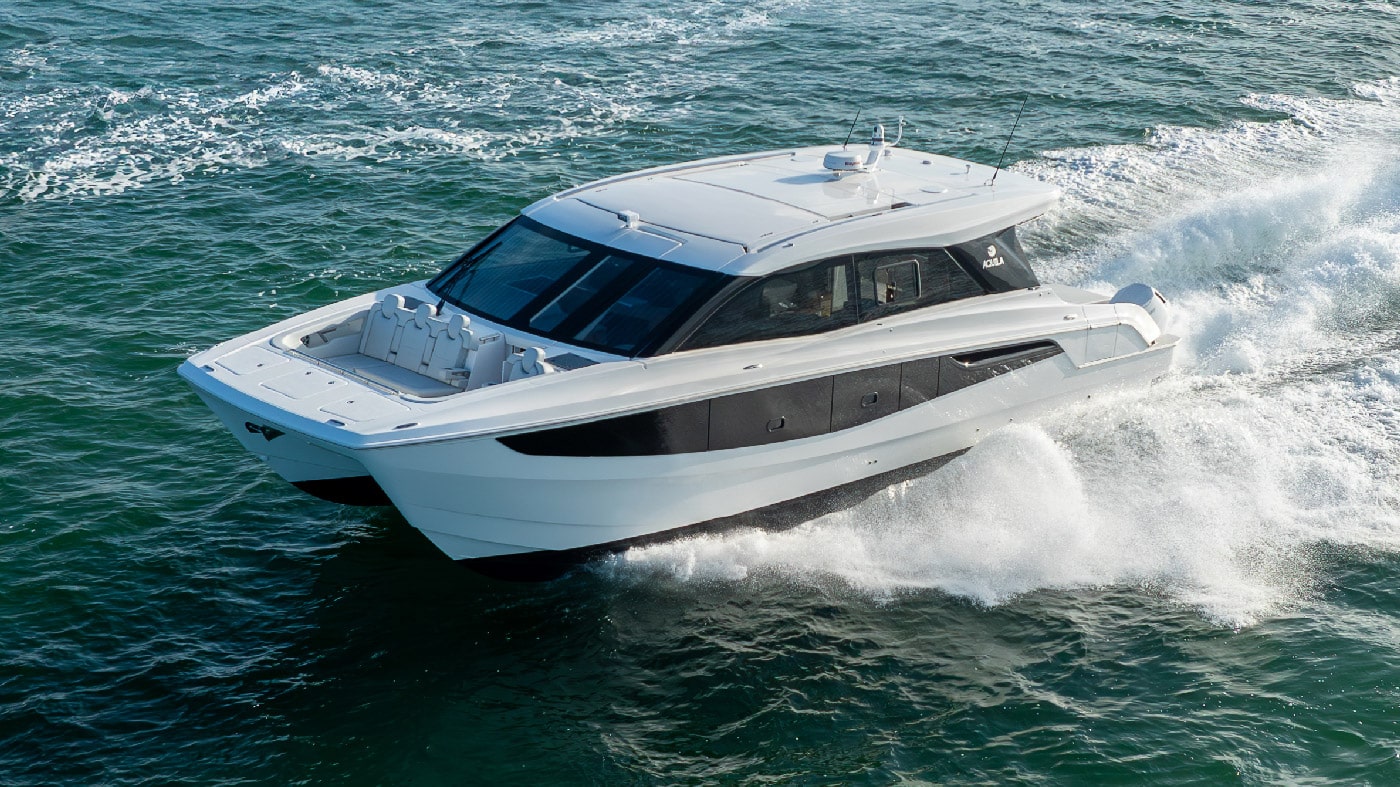Reading the wake and positioning the lures
When reaching fishing spots, often after covering quite a few miles, the thing that excites us the most is pulling out our lure bag and casting the first rods. However, before doing any of this, a smart angler should try to read his boat’s wake and figure out the best spots to cast certain lures.
So, upon arriving at the fishing area, it is best to slow down to an average fishing speed of 6-7 knots and start observing the wake behind you and your “Strike Zone,” which we discussed in the previous article. This is the area between the transom and the end of the propeller’s wake or the turbulence created by the boat’s hull. Essentially, it is the zone where strikes, or catches, are most likely to occur.
Analyzing our wake, we will see that the central area contains the propeller turbulence, a swirling mass of white water that affects the stability of lures if they are cast into this main turbulence.
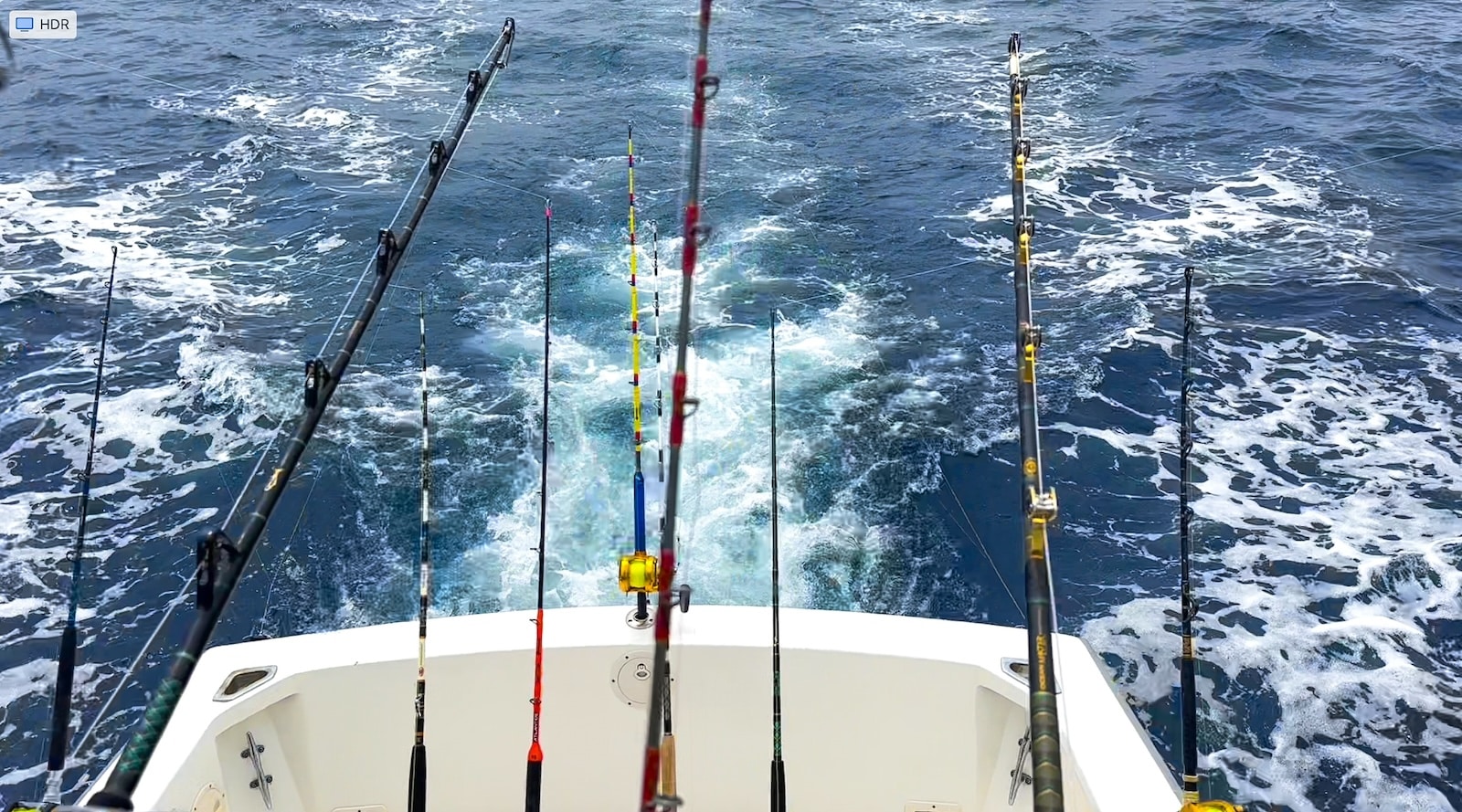
This propeller wake is deeper at the transom, with the maximum depth at the blades, coming very close to the surface over a short distance. Although it may seem like very compact white water, it is quite translucent, allowing predators to find the lures within it.
On the sides of this central flow, there are lanes of cleaner water with little to no foam or turbulence. This is an excellent area to cast a lure, as it will be highly visible and thus in a zone free of turbulence, which would otherwise affect its proper swimming.
It’s also important to note that the white water coming off the sides of the boat is very shallow and almost transparent, primarily consisting of surface bubbles. A lure cast in this area is likely more visible than in any other area, as the white, foamy surface will highlight the lure’s silhouette. However, if there is too much turbulence, it could affect the stability of the lure.
One thing to keep in mind is that generalizations can never be made; there are many variables to consider, and each boat has its own unique wake, which will change based on speed, sea conditions, and the direction of movement relative to the surface current. For example, the wake is longer when moving against the current and shorter when moving with the current. Therefore, you should extend the distance of the lure from the stern when going against the current and shorten it when moving with the current.
The strike zone is constantly changing, and to achieve the best results, you will need to adjust the positions, heights, and distances of your lures as conditions change.
Pressure waves
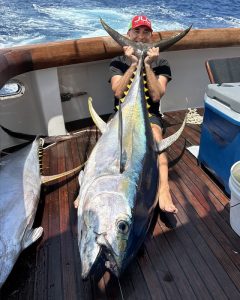
An essential factor to consider within the Strike Zone is the waves following the boat. These are pressure waves created by the boat, varying in size depending on the boat’s dimensions and hull type. The distance between the pressure waves roughly corresponds to the boat’s waterline length. These waves are crucial in offshore trolling with surface lures. Indeed, it is key, whenever possible, to position the trolling lures on the front face of the wave (the part of the wave facing the boat).
By observing these pressure waves behind your boat, you’ll notice they are higher and wider towards the stern but gradually become lower and narrower further back in the wake, eventually fading towards the end of the boat’s wake. The wave’s front face, facing the boat, is much more visible to a fish approaching from behind than the back of the wave. Generally, positioning the trolling lure on the lower third of the wave’s front face is ideal in terms of visibility for the fish, ensuring a good swimming rhythm for the lure, and making it easier for the fish to attack it while swimming in the wave.
Some boats have almost imperceptible pressure waves, so in these circumstances, lure positioning should follow these criteria less strictly. The rougher and more turbulent the sea, the harder it is to distinguish where the pressure waves are (sometimes almost impossible). However, with experience, you’ll learn how the waves appear or influence the wake and, thus, determine the points within the strike zone where the lures perform correctly.
Offshore trolling lures
No one can ever tell us with certainty why a lure manages to deceive a predatory fish, but it is certain that some lures work because they elicit excellent predatory or aggressive responses.
We know that in the animal world, anything that moves, in this case, swims, and can be caught is a potential prey and thus a source of food. Obviously, the more this swimming object resembles common prey and the more it appears to be in distress, sick, or injured, the more likely it is that a predator will expend its precious energy resources on an attack. This is a natural response to the predatory instinct, an inherent trait in living beings born with this instinct.
Try throwing a ball in front of a puppy or kitten, and you’ll see that it instinctively chases it. A similar thing happens when a lure is run in front of a hunting predator. However, several factors contribute to a predator deciding to attack: the lure’s size, color, swimming action, shape, emitted vibrations, the influence of the hook and leader, and, crucially and often overlooked, the zone where the lure is positioned behind the boat.
How a lure behaves
Leaving the analysis of artificial lures like minnows for other articles, the lures commonly discussed in offshore trolling are surface lures, which we can define as skirted lures.
All these types of lures, when trolled in our strike zone, should work with a precise rhythm in a repeating cycle. A good offshore lure should operate according to the following rhythm: it rises to the surface, captures air (commonly referred to as “breathing”), then re-enters the water, leaving behind a long trail of air bubbles (known as “smoking”). When it stops “smoking,” it should rise again to capture more air for another “breath.”
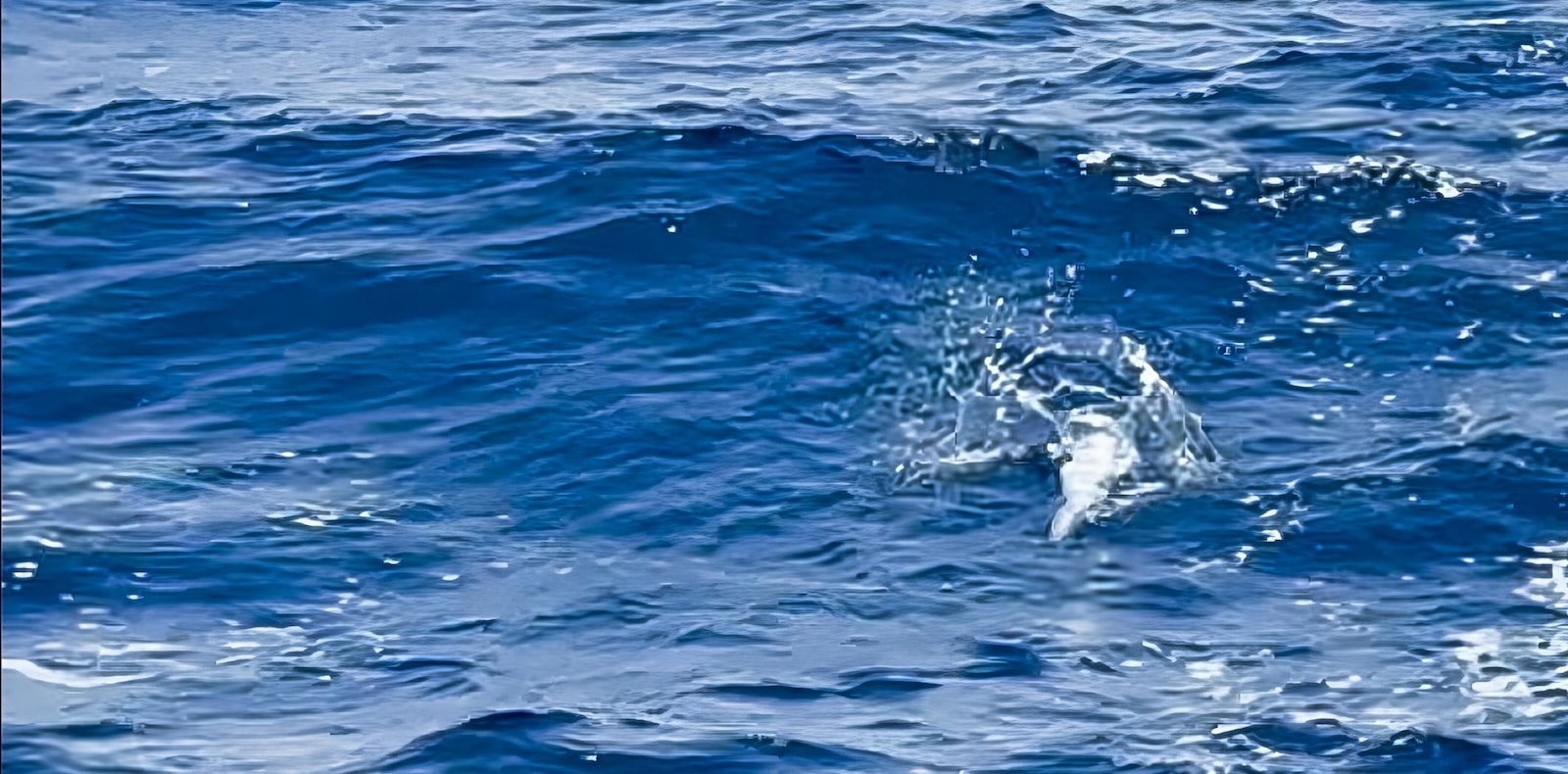
The above explanation represents a correct rhythm, but it can happen that the lure continues swimming underwater after it has run out of trapped air, failing to produce a smoke trail for a certain period. This period is referred to as the “lazy” period. Conversely, the lure might return to the surface too often, still having air to release for the smoke trail underwater, expelling the remaining air during the next breath.
What is certain is that every lure, of different shapes and sizes, will follow this cycle with its own timings. These timings can vary significantly from one lure to another and yield different results depending on the circumstances.
For example, some lures have longer breathing cycles of 10-15 seconds, such as sliced headed lures (cut angled, as seen in the photo), some of which even have rhythms of 20-25 seconds between breaths. These lures are highly appreciated in oceanic waters.
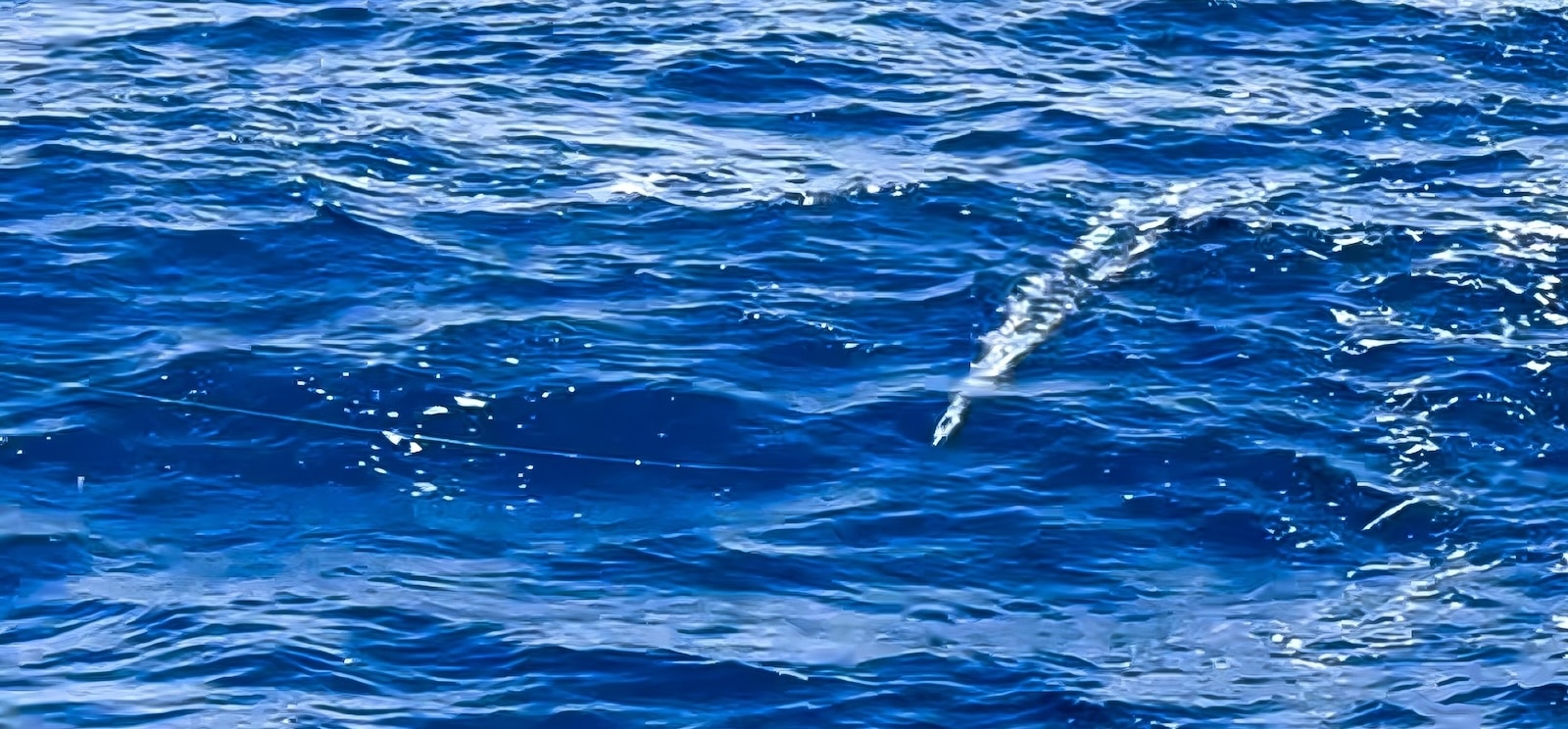
Personally, I have always preferred very active lures with faster rhythms.
Indeed, these lures have consistently yielded the best results for me, even in rather apathetic fishing situations, both in the Mediterranean and in other seas. It’s no coincidence that the lures I personally design and develop, such as the collection tailored for a prominent international company, perform best when worked with a breathing cycle between 4.5 and 5.5 seconds.
These are mostly lures with symmetric heads, featuring a more or less deep cup-shaped face, known as cupped faced lures or cupped nose lures. These lures, also referred to as chugger head lures, when finely tuned in the wake by studying their positioning point and the angle at which the line connects to the lure, with a cycle lasting about 5 seconds, can deliver great satisfaction by effectively provoking fish.
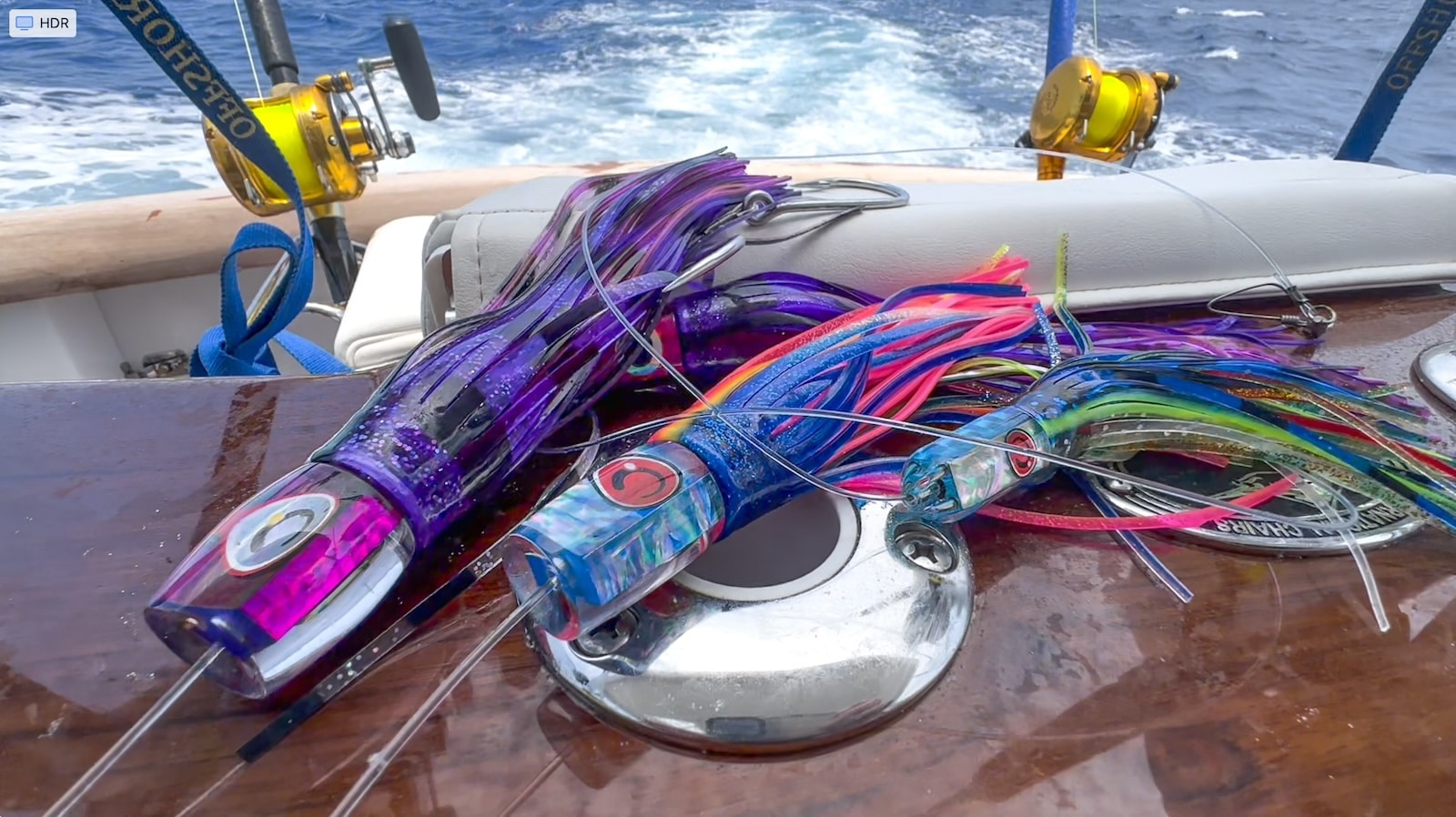
Of course, not all lures operate in the same manner. Some lures come to the surface and breathe with a few splashes before submerging, while others explosively break the surface with loud noise, lifting water and splashes. Some dive straight down, others dart from side to side; some lures describe a deep, progressive arc as they dive, while others shake from side to side upon immersion, moving their head or skirt. Furthermore, each lure model leaves a different wake behind it, so the smoke trail can vary greatly from very subtle to very noticeable.
You might wonder which factors influence these behaviors. It primarily depends on the shape of the lure’s head, its face, and length, as well as the trolling speed. The frequency at which a lure cycles its action can vary based on sea conditions—whether rough or calm—its position in the strike zone, boat speed, trolling direction with or against the current, the angle at which the line enters the water, the weight of the line, including the diameter and weight of the leader used.
A well-working lure can trigger aggressive strikes from predators. When the hook is properly engaged, a successful strike is assured.
Stay tuned to YachtingNews Fishing for more insights!




















